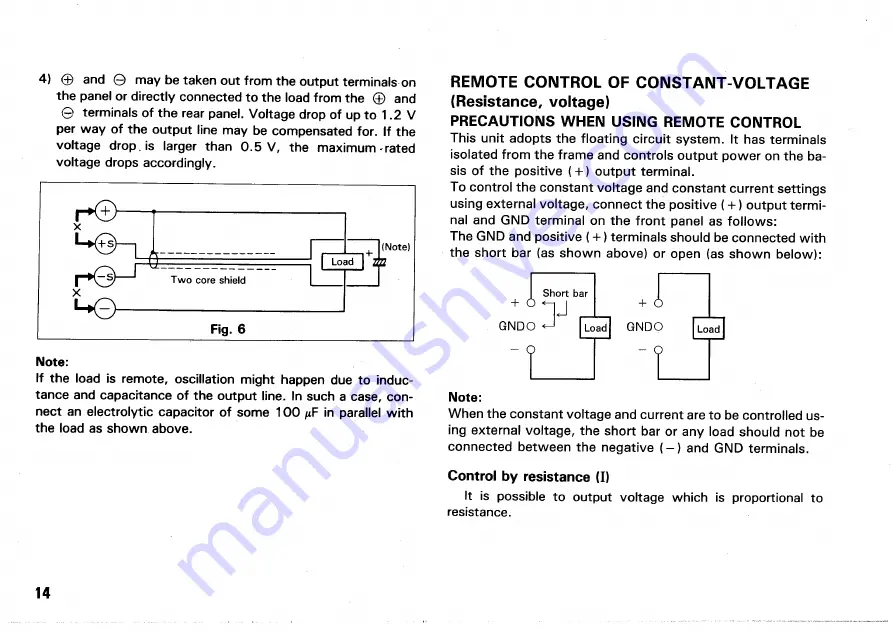
4) © and © may be taken out from the output terminals on
the panel or directly connected to the load from the © and
© terminals of the rear panel. Voltage drop of up to 1.2 V
per way of the output line may be compensated for. If the
voltage drop, is larger than 0.5 V, the maximum-rated
voltage drops accordingly.
( N o t e )
T w o c o r e s h i e l d
L o a d
Fig. 6
Note:
If the load is remote, oscillation might happen due to induc-
tance and capacitance of the output line. In such a case, con-
nect an electrolytic capacitor of some 100 /iF in parallel with
the load as shown above.
REMOTE CONTROL OF CONSTANT-VOLTAGE
(Resistance, voltage)
PRECAUTIONS WHEN USING REMOTE CONTROL
This unit adopts the floating circuit system. It has terminals
isolated from the frame and controls output power on the ba-
sis of the positive ( + ) output terminal.
To control the constant voltage and constant current settings
using external voltage, connect the positive ( + ) output termi-
nal and GND terminal on the front panel as follows:
The GND and positive (+) terminals should be connected with
the short bar (as shown above) or open (as shown below):
S h o r t b a r
L o a d
Note:
When the constant voltage and current are to be controlled us-
ing external voltage, the short bar or any load should not be
connected between the negative ( - ) and GND terminals.
Control by resistance (I)
It is possible to output voltage which is proportional to
resistance.
14
GND<
G N D
L o a d
Summary of Contents for PD110-3
Page 8: ...CONTROLS AND INDICATORS FRONT PANEL Fig 3 ...
Page 10: ...10 Fig 4 REAR PANEL ...
Page 26: ...DIMENSIONS Fig 2 0 26 ...














































